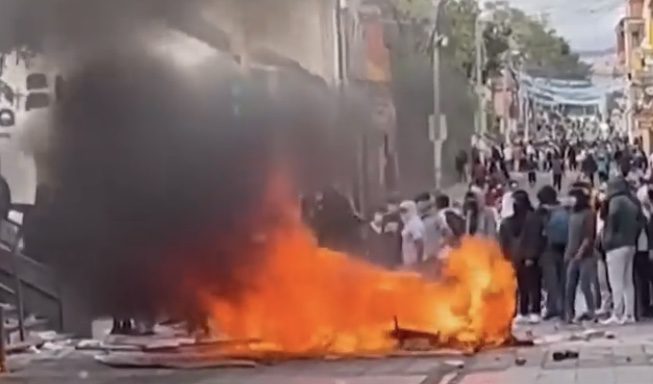State of Emergency in Peru: Crisis intensifies
Sawako Utsumi and Lee Jay Walker
Modern Tokyo Times

The ousting of President Pedro Castillo in Peru is witnessing mass protests throughout various parts of the country. At least 20 people have been killed after the newly unelected leader of Peru, Dina Boluarte, declared a State of Emergency.
In the region of Ayacucho, tensions are especially running high. After protesters tried to break into the runway of the local airport in Huamanga, the security forces responded by killing at least 8 people.
The Guardian reports, “… soldiers had opened fire on stone-throwing protesters, who tried to storm the local airport’s runway, killing at least eight and injuring more than 70 in running battles, as helicopters rained teargas canisters and bullets over the city.”
This region is traumatized by the legacy of the security forces and the Maoist insurgents of the Shining Path. Approximately half of the 70,000 deaths in Peru between 1980 and 2000 happened in this Andean region – with brutality happening on all sides of the political fence.
Before Castillo dissolved Congress, he declared an “…exceptional emergency government…to re-establish the rule of law and democracy.”
The political crisis developed rapidly when Castillo sought the dissolution of Congress, fearing his impeachment because of the constant calls for this despite two failed attempts. Hence, no compromise was forthcoming. Thus events spiraled quickly. Therefore, Castillo was ousted and arrested – and Boluarte took control of the government and soon declared a national State of Emergency.
Protests to restore Castillo soon emerged. They demand that Boluarte steps down and that Castillo is restored to power.
Powers under the State of Emergency entail that the security apparatus can bypass judicial orders and break into the homes of people at random. Gatherings outside and moving freely throughout the country were also curtailed under the State of Emergency. However, this approach incensed opposing forces and ordinary people who are worried about the legacy of the past.
Boluarte said, “We mourn the tears of the mothers in Ayacucho and we suffer the pain of the families throughout the country.”
The former Education Minister (Patricia Correa) resigned because of the political crisis and the ensuing violence. Correa said, “state violence cannot be disproportionate and cause death.”
The BBC reports, “… Castillo, who is currently in detention, is being investigated on charges of rebellion and conspiracy. He denies all the accusations, insisting that is still the country’s legitimate president.”
Andina reports, “State ministers are traveling to various regions across the country to establish channels of dialogue, as well as to restore tranquility and peace throughout the country.”
It is hoped that compromises can be made on all sides before the nation spirals out of control.

Modern Tokyo News is part of the Modern Tokyo Times group
http://moderntokyotimes.com Modern Tokyo Times – International News and Japan News
http://sawakoart.com – Sawako Utsumi’s website and Modern Tokyo Times artist
https://moderntokyonews.com Modern Tokyo News – Tokyo News and International News
PLEASE JOIN ON TWITTER
https://twitter.com/MTT_News Modern Tokyo Times
PLEASE JOIN ON FACEBOOK